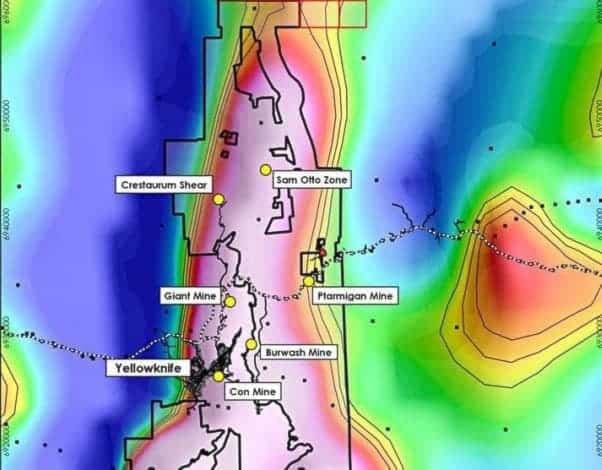TerraX Minerals Inc. is facing a regulatory delay in getting an important water licence despite mollifying concerns initially raised by the Department of Fisheries and Oceans.
The delay has disrupted work and affected some jobs at its Yellowknife City Gold project.
While TerraX didn’t respond to requests for comment by press time, subcontractor Foraco Canada Ltd. told Yellowknifer, when asked, that “at least six” of its local jobs have been affected by the delay.

“This is having a very big impact in terms of jobs and local supply of goods and services,” stated Tim Bremner, president of Foraco Canada, in an email response.
TerraX’s response to concerns raised about its projected water usage, as well as revised sections of its draft water licence, are currently up for public review on the Mackenzie Valley Land and Water Board’s website.
Comments on these files are due by Feb. 18, with TerraX’s responses to these comments due by Feb. 22.
“If there are no outstanding issues at the end of the public review, the application package could come before the board for decision within several weeks,” stated Shelagh Montgomery, executive director of the water board.
During the application process for TerraX’s Type B water licence, covering the next five years of work at its property, the Department of Fisheries and Oceans raised concerns that TerraX had not provided enough information on how much water would be used by its Yellowknife City Gold project and which lakes water would be drawn from.
These concerns were raised as part of the normal public review process for the licence application, according to Montgomery.
“There is nothing different about the process for TerraX’s application,” she stated.
In TerraX’s response to the board’s request, executive chair Joe Campbell stated that while the Type B water licence allows for approximately 110,000 cubic metres of water usage per year, TerraX would likely only use 30,000 of that per year.
Despite not using the full amount, Campbell wrote that flexibility is needed in how much can be drawn per day and per year as less water will be used one day and more another and much of the drilling is compacted in a six- to eight-month season.
As well, Campbell wrote, due to the nature of mineral exploration, it is not possible to predict where all drilling and camp activities will occur, and at what magnitude in each individual spot.
Flexibility, therefore, is needed for water sources as well.
In an effort to illustrate low risk of “serious harm,” Campbell illustrated worst-case scenarios in which – with no precipitation or natural inflow taken into account – TerraX’s impacts on local lakes would be “negligible.”
The Department of Fisheries and Oceans stated on Jan. 24 that additional information TerraX had submitted quelled its concerns.
Changes to the new draft water licence list hundreds of lakes from which TerraX can draw water, and keep allowances of usage up to 299 cubic metres per day and a maximum draw of 0.5 per cent of total volume of a water source, which align with Campbell’s stated needs for flexibility.
The changes also require TerraX to notify an inspector of a water source to be used 10 days prior to drilling, compared to 48 hours in the previous draft.
Campbell wrote in his letter that the company believes this situation and TerraX’s response, provides a useful case study for assessment of future exploration programs.
“Issuing the licence will indicate that the current MVLWB water license application process responds to the requirements of the mineral exploration industry, in addition to the board’s larger responsibility to regulating mine development applications,” he wrote. “The result for TerraX, and all other exploration companies would show that these rules and regulations are a positive driver for responsible exploration activity.”
